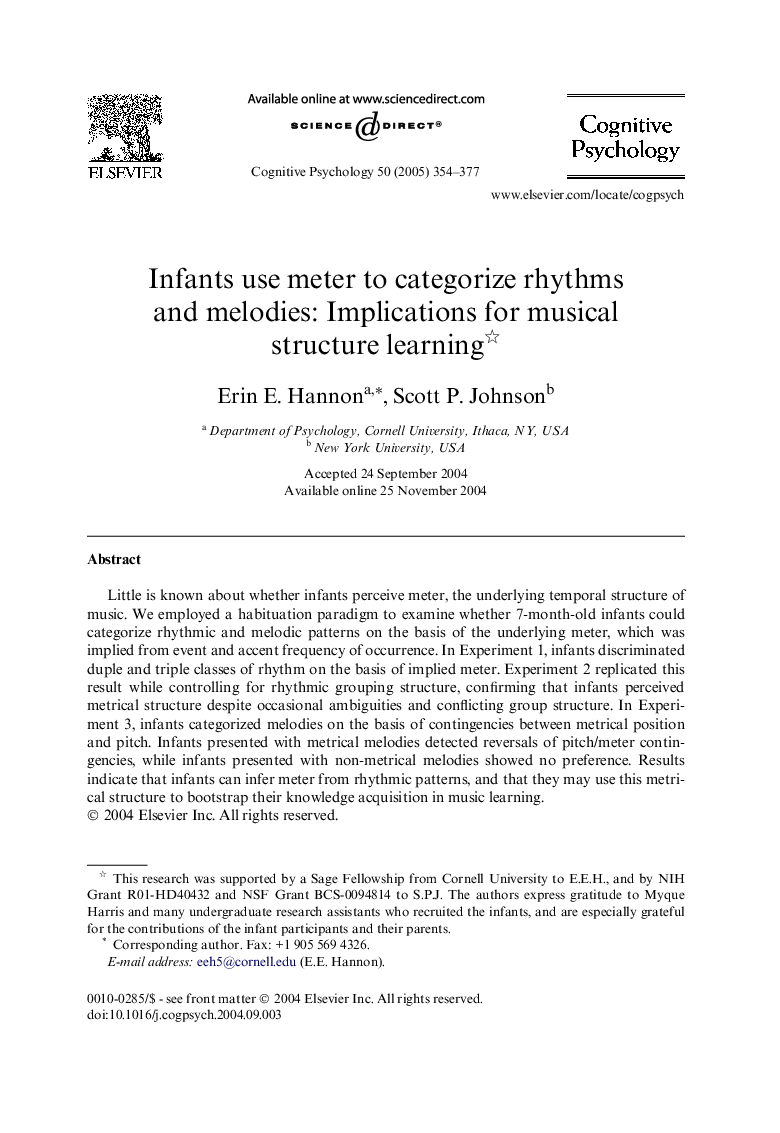| Article ID | Journal | Published Year | Pages | File Type |
|---|---|---|---|---|
| 9721951 | Cognitive Psychology | 2005 | 24 Pages |
Abstract
Little is known about whether infants perceive meter, the underlying temporal structure of music. We employed a habituation paradigm to examine whether 7-month-old infants could categorize rhythmic and melodic patterns on the basis of the underlying meter, which was implied from event and accent frequency of occurrence. In Experiment 1, infants discriminated duple and triple classes of rhythm on the basis of implied meter. Experiment 2 replicated this result while controlling for rhythmic grouping structure, confirming that infants perceived metrical structure despite occasional ambiguities and conflicting group structure. In Experiment 3, infants categorized melodies on the basis of contingencies between metrical position and pitch. Infants presented with metrical melodies detected reversals of pitch/meter contingencies, while infants presented with non-metrical melodies showed no preference. Results indicate that infants can infer meter from rhythmic patterns, and that they may use this metrical structure to bootstrap their knowledge acquisition in music learning.
Related Topics
Life Sciences
Neuroscience
Cognitive Neuroscience
Authors
Erin E. Hannon, Scott P. Johnson,
